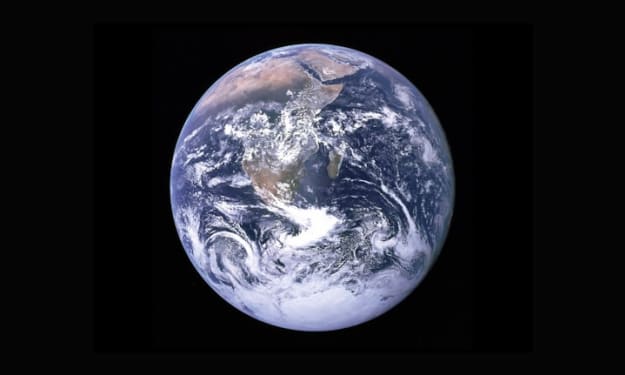Our solar system
Things you probably didn't know about our solar system

The true color of the sun
If you've always thought our son was a bright yellow ball of fire you were wrong.. for starters it's not yellow, it's green . Sort of...
Scientists determine the temperature of a star by the color spectrum it emits each color has its own wavelength and astronomers measure those wavelengths to tell how hot a star is cooler stars appear red the hottest of the stars look blue our sun emits most of its energy at a wavelength that's close to Green but because it also emits other wavelengths all these colors mixed together and your eyes see this vibrant mixture as white that is if you look at the Sun from the International Space Station from here on Earth the Sun looks yellow because our atmosphere is really good at scattering blue light and with all that blue wavelength gone all the other colors combine into yellow.
The sun isn't on fire
The Sun possesses intense heat, but it's not ablaze in the conventional sense. Combustion, characterized by a chemical reaction involving oxygen and fuel, is absent. Much like numerous stars, our sun is essentially a mass of gas, predominantly composed of hydrogen and helium, with minimal oxygen.
Instead of burning like a fire, it operates as an immense nuclear reactor. Within its core, hydrogen atoms continuously undergo fusion to produce helium, generating an immense amount of energy and accounting for the sun's scorching temperatures.
Explosion??
Transitioning to the topic of space explosions, these are not feasible. In the vacuum of space, devoid of air, there is no medium for combustion. Consequently, a spaceship cannot undergo a violent explosion since there is no oxygen to sustain a fire.
Unfortunately for Star Wars enthusiasts, the absence of oxygen in space renders the iconic cinematic explosions an implausible scenario.
Speaking about Star Wars..
Contrary to the portrayal in movies, you don't need extraordinary piloting skills to navigate the asteroid belt. It's not a densely packed death course but rather a collection of trillions of space rocks varying in size from minuscule space dust to some as large as a quarter of the Moon. While there are around 100,000 asteroids over one kilometer wide, they are widely dispersed.
Situated between Mars and Jupiter, the asteroid belt spans an impressive 225 million kilometers, equivalent to one and a half times the distance between Earth and the Sun. This vast expanse results in the space rocks being scattered millions of kilometers apart, making it highly improbable for a spacecraft to collide with one.
Space is not even cold
While space may seem incredibly cold, the reality is that it doesn't possess a temperature at all. Temperature is a measure of particle movement and energy. In the true vacuum of space, devoid of particles, there is no temperature, making it temperatureless.
However, outer space isn't a perfect vacuum; it contains particles and radiation that contribute to heat generation. Certain regions of space, especially in proximity to stars, can be quite hot. Nevertheless, as you move farther away from stars, the particles become more dispersed, resulting in colder areas of space.
In some instances, dense gas clouds within space can reach frigid temperatures, plummeting as low as minus 263 degrees Celsius.
The hottest planet in our solar system
Mercury holds the distinction of being the closest planet to the Sun, yet surprisingly, it's not the hottest. Nonetheless, it experiences extremes. In the daytime, the surface temperature soars to a scorching 430 degrees, plunging to a chilling minus 180 at night.
The most infernal planet in our solar system, however, is Venus. Unlike Mercury, which lacks a substantial atmosphere to trap solar heat, Venus boasts a thick atmosphere that induces a potent greenhouse effect. This effect, akin to global warming on steroids, transforms Venus into a blazing inferno, with a surface temperature reaching about 475 degrees.
Fun fact
If our star was actually yellow it would be about 800 degrees Celsius cooler our Solar System's habitable zone would shrink and Earth would become a frozen lifeless Rock.
About the Creator
K. Thomas
This is the place for whoever has changing interests like me.
Enjoyed the story? Support the Creator.
Subscribe for free to receive all their stories in your feed. You could also pledge your support or give them a one-off tip, letting them know you appreciate their work.






Comments
There are no comments for this story
Be the first to respond and start the conversation.